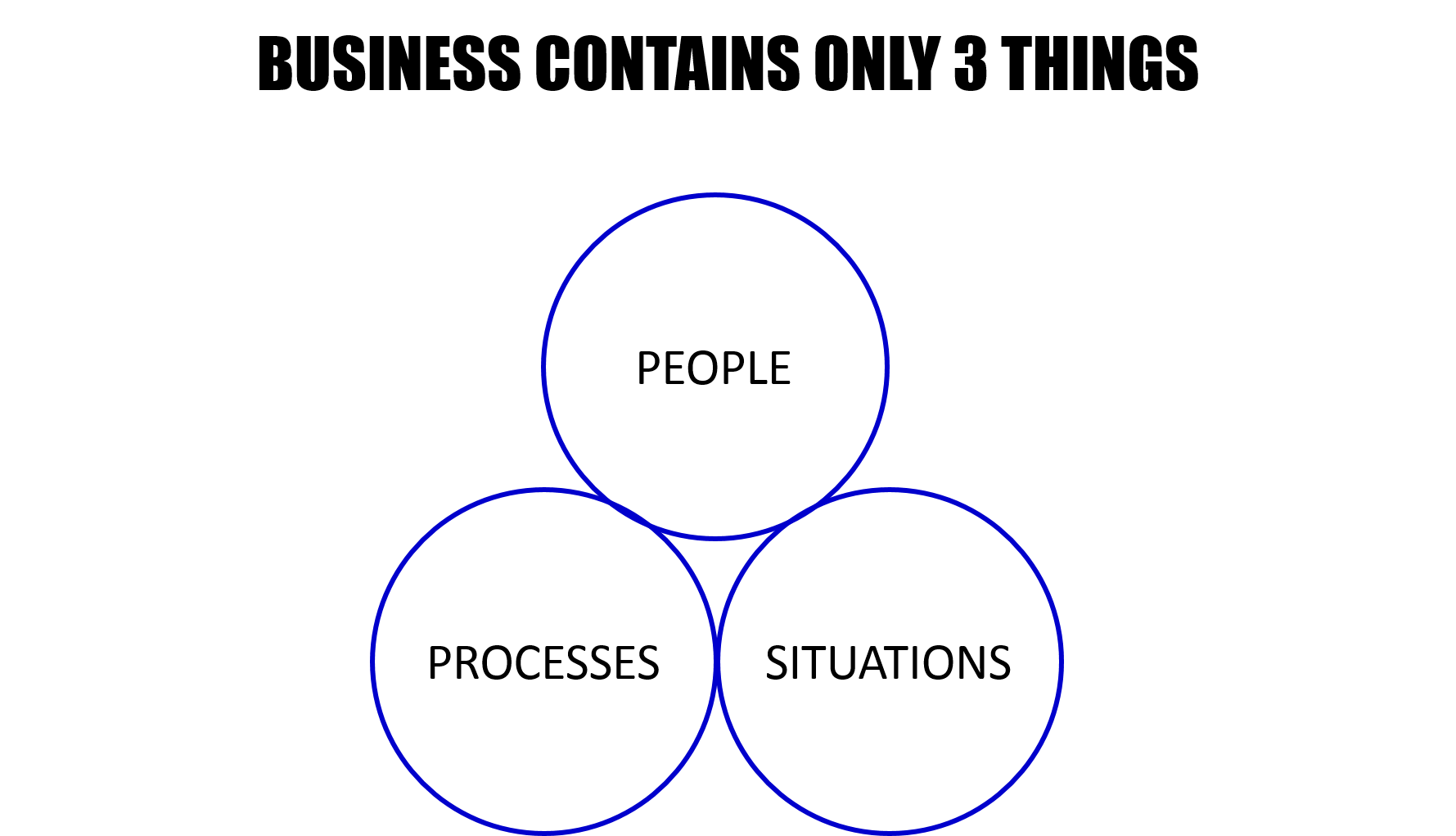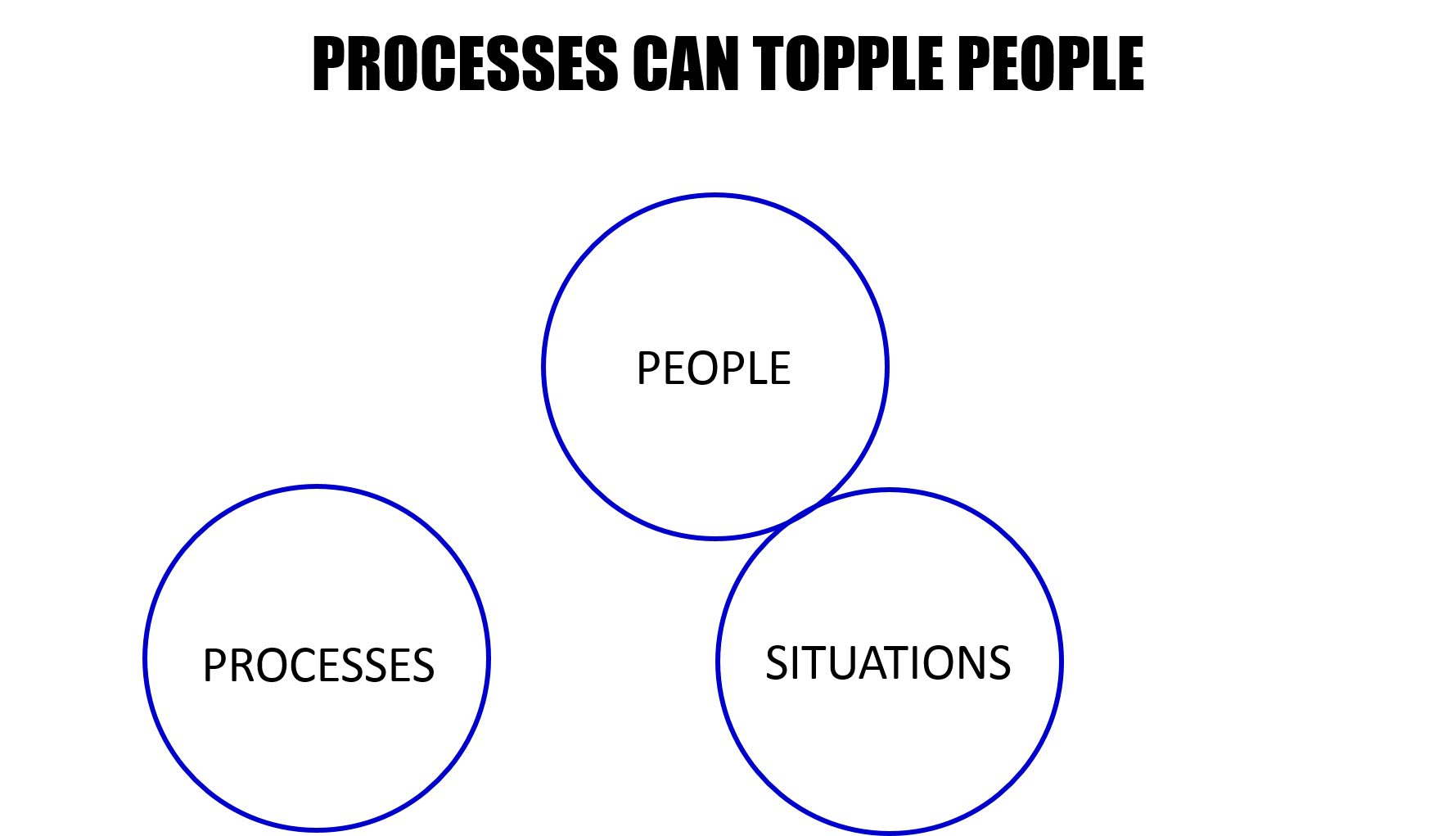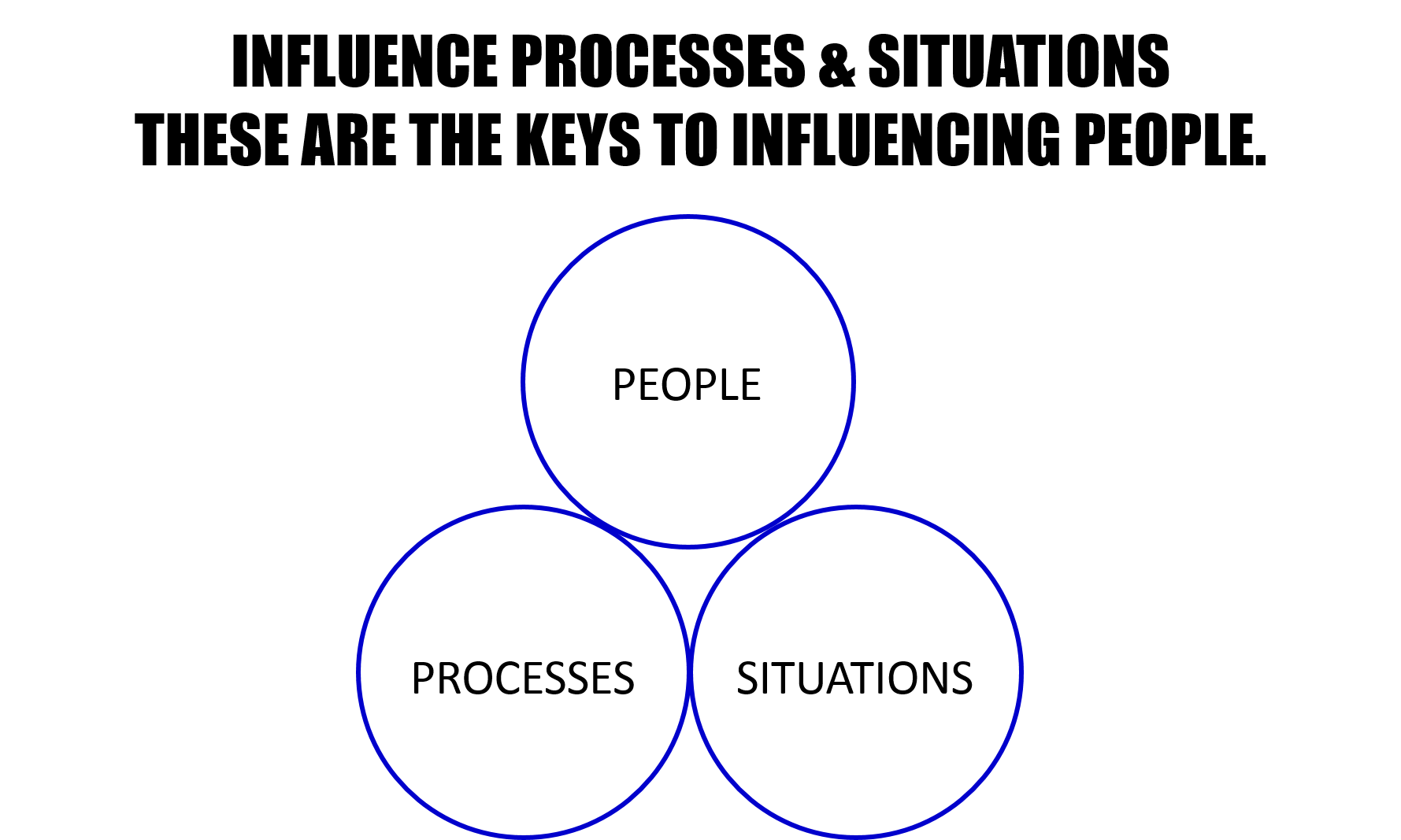As part of our ongoing effort to seek simple, Spirited Leaders arrived at the conclusion - Business Contains Only 3 Things: People, Processes, & Situations. We have written about Business Contains Only 3 Things. We have also written much about People...and Processes...and Situations...and the interplay between these '3 Things', The Only 3 Things in Business.

Processes and Situations have a huge impact on People's behaviour. Expressed another way, People react to Processes and Situations and adjust their behaviour, either consciously or unconsciously, to fit their perceptions of the Processes and Situations.
Processes & People:
Communication is a Process. We have the ability to choose how the communication process happens. Communication process involves different transmitters, receivers, media, timing & pace, content, tone, style, etc. When People experience communication Process they react to it. If they are comfortable with the communication process then people tend to be more receptive and behave in positive ways. If they are not comfortable - if they are uncomfortable with the communication process - then they tend to be less receptive and behave in ways that are consistence with avoidance or resistance.
We know people react to the packaging of the message.
Yet, often, that is forgotten. Often, people feel/think they are too busy to take the time to package their communications: they don't plan the communication process, they just let communication happen. Then, they find other people do not respond well to their messages. Consequently, they fail to accomplish the things they desire.
Perhaps, the following picture will help these people...

If you want to influence People's behaviour, you need to make sure your Processes support 'Influence'. Particularly, pay attention to communication processes.
And, if you want to influence People pay attention to Situations...

Develop an understanding of Situations and how they affect People's behaviour:
- Study Situations - which ones align with success and which ones do not?
- Observe how People react in certain key/crucial Situations - what might you be able to do to bring about the behaviours you want?
- Anticipate Situations - like the moves in a chess game, most People reactions can be anticipated
- Adjust your behaviour in Situations - self-control is the first step...then there is much more
- Plan & design Situations - this is the leader's obligation
Pave the path for 'Influence'.
Spend more time thinking about and developing expertise covering Processes and Situations...
